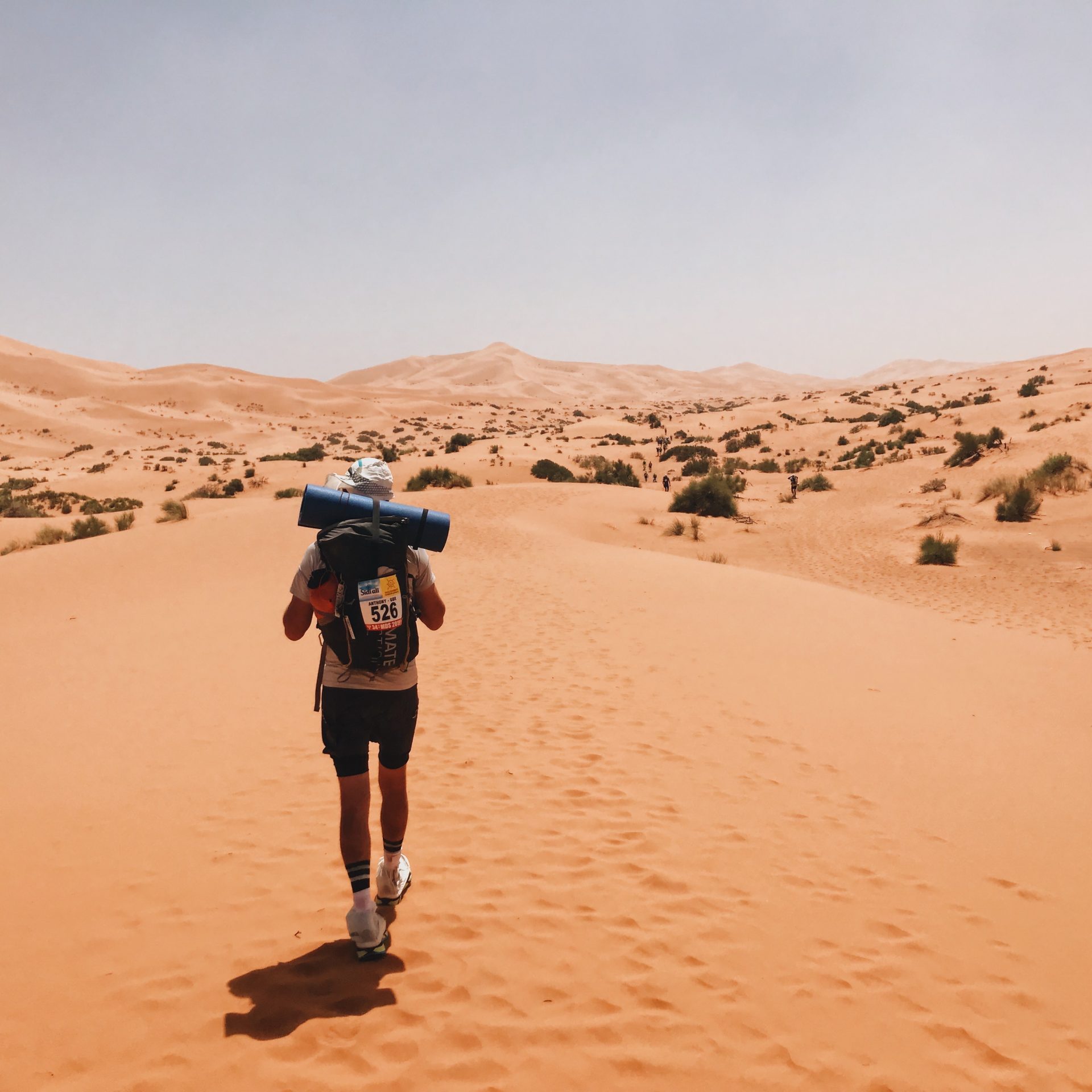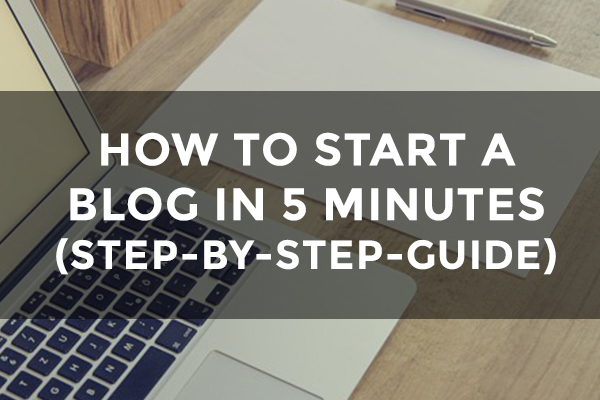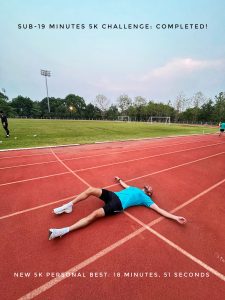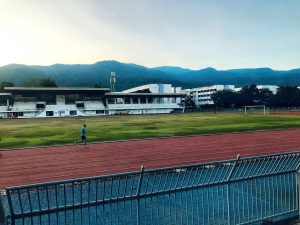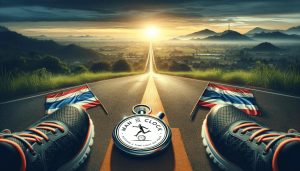An ultramarathon packing list for running 100 miles comes down to the weather, personality, and personal goals amongst other factors.
When I ran The Marathon des Sables I just wanted to survive and get through the race. Although I did just that I learned that I took way too much gear and therefore I was much better prepared for my 100 miles ultra experience that I ran for a charity in Bangkok.
While you won’t be bringing all 54 items on this list to your ultra, I aim to leave no stone unturned with this master list for 100 mile races and it will, of course, serve you well for any other ultras that you pack for in the future.
Ultramarathon Packing List For Running 100 Miles
A 100 miles run packing list needs to be as light and efficient as possible. You have to be ruthless and tactical. Basically, if you don’t need it and it doesn’t improve your ultra-run… don’t bring it.
I’m extremely happy with my packing list, a lot of thought went into it after my Marathon des Sables experience and considering the fact that our 123 miles ultramarathon was completely self-sufficient, I think we all did exceptionally well.
As a lot of my items were weather-specific, I will highlight those and make sure I add items for colder weather ultramarathons.
Clothes
The best gear to wear on your body and have inside your bag:
- Ultrarunning bag – I stuck with my trusty Ultimate Direction FastPack from Marathon des Sables. It was bigger than my mates’ but it just hugs the body so tightly and that’s the main reason I stuck with it. I couldn’t recommend this brand enough.
- Running shorts x 2 – I took one extra as optional, they were small (proper running shorts are skimpy) so didn’t take up much room.
- Compression shorts – They apply pressure to the body, which helps prevent injuries and also pre-existing injuries. I buy the compression shorts with a pocket for my phone on the side.
- Running shirt x 2 – Make sure you get a night-visible t-shirt. Like the shorts, the extra one doesn’t take up too much room. Also, make sure you buy one specifically designed for the climate in that you will run your ultra.
- Sleeve protectors x 2 – Same deal as compression shorts but for your arms.
- Calf Compression sleeves x 2 – As above…but for your calves.
- Toe socks x 2 – You will have fewer blisters if you wear these. Split-tested by yours truly.
- Snood/Buff – They can hold long hair together and protect baldies like me from the sun. An all-around action hair hero.
- Gaiters – Optional, depending on terrain. For example sand dunes or snowy ground.
- Running glasses x 2 – For nasty splashes and any weather with the sun (important note; running on ice/snow also produces a glow in your eyes).
- Poncho – For when it rains, duh. (The lighter, the better).
- Knee support – Optional for anyone with knee injuries. I don’t have any knee problems, but I took it just in case I had any knee dramas on the run.
- Base layers – Definitely need these for cold weather, especially at night time when the temperature really drops. In fact, you should consider them even in warm weather. I didn’t take one and I was unpleasantly surprised by how cold my body got running at night (in Thailand!) and I’m sure my shivering burned off much-needed calories that I needed for fuel.
- Gloves – Warm weather gloves for cold weather and slimmer ones for protecting your hands against the sun in hotter climates.
- Running hat – For sunny climates. Absolute gold for baldies, it protects the back of the neck too.
Safety
For when running at night and also to protect against the sun:
- Head torch – 200+ lumens should do the trick.
- Bike torch for the bag – One with a flash setting is better.
- Sunscreen – Factor dependent on your climate.
- Whistle – For emergencies.
- Phone – Entertainment and emergencies. Offline maps are also handy if you go off-piste.
- Batteries for torches. Self-explanatory.
- Power bank
- Phone charger
Food
Because without sufficient fuel you are doomed to fail:
- Dehydrated, high-calorie food pack – I opted for only one 1000 calories meal as backup, as we planned our food out along the way via 7-Eleven stores and restaurants.
- Huel powder (optional) – LOVE this stuff, absolutely perfect for mountain climbing and ultras. Sadly, they don’t deliver to Thailand anymore so I stock up every time I go back to the UK.
- Dates/Bloks/Gels/Dried Raisins – Whatever works better for you. I did a few tests during training, you should also see what works out better for you and your digestive system.
- Electrolyte powder – I highly recommended the company Precision Hydration for personalised electrolyte powder, depending on the answers you give in their brilliant algorithm-based questionnaire, they will send you customised electrolytes tailor-made, especially for you!
- Sodium tablets – To replace the lost salt from your sweating. It will also prevent muscle cramps.
- Energy bars – I’m a Clif Bar kinda guy myself, but whatever floats your boat.
- Collapsible water bottles – Only needed if you don’t have a CamelBak, my 2 mates had one. I did not, so I bought 3 of these – 2 for water refills and one for my electrolyte powders.
First Aid
It’s better to be safe than sorry and unable to continue:
- Zinc oxide tape – I taped parts of my feet up the night before on the problem areas, that being where I usually get blisters (and it worked a treat on the big day).
- Iodine
- Needles x 2 – To pop your myriad of blisters.
- Painkillers
- Bandages
- Imodium
- Waterproof plasters – Also known as “band-aids” for the American and Canadian reading audience.
- Lip balm
- Vaseline – For nipples and bumhole chaffage.
- Body Glide/Squirrel’s Nut Butter – As above. A few ultra-running readers replied to my Insta stories, absolutely raving about Squirrel’s Nut Butter. Saviour of anuses apparently, alas it was too late for me to get delivered abroad.
- Small antiseptic tube – For scrapes and blisters.
- Bug spray – I live in Chiang Mai (Thailand) so mosquito spray was vital for me. Do some due diligence to which treacherous little flying critters are in your ultra-run area, as some can be pretty nasty.
- Wet wipes – For toilet stuff, also it’s amazing how small things like a fresh face after a little break can really perk up your fallen morale.
- Anti-inflammatories
Personal Care
- Mini toothpaste
- Mini travel toothbrush
- Travel towel
- Soap/Hand wash
- Menstruation supplies – For ladies’ time of the month.
- She-Wee – Female ultrarunners and hikers swear by these as they don’t have to squat to wee and therefore don’t put pressure on their tired legs.
Miscellaneous
- Earphones – For listening to music, Audible or podcasts for inspiration when motivation is low.
- ATM + Cash – If like myself, your 100 miles ultramarathon is self-governed you will need this for food supplies. You should also consider this if your race is new, or you could end up like this Italian gentleman.
- Sleeping bag liner – I didn’t do this, but you might want to take one, especially for a little nap to keep yourself warm, it added an extra option of layers for me when I climbed Puncak Jaya.
- Hot hands and feet – Hand warmers/foot warmers, also known as a heat pack for cold weather.
- Hiking poles – I didn’t use them for Marathon des Sables. The hardcore calls them “cheat sticks.” I am glad I brought them on this occasion, this decision is up to you. Shop around your local hiking store to find the best one for you and your anatomic structure.
There you go, take from this 100 miles ultramarathon packing list what you need and simply leave out what you do not. Good luck with your run!
Other ultramarathon training resources:
If you like lists, you might also like these:


